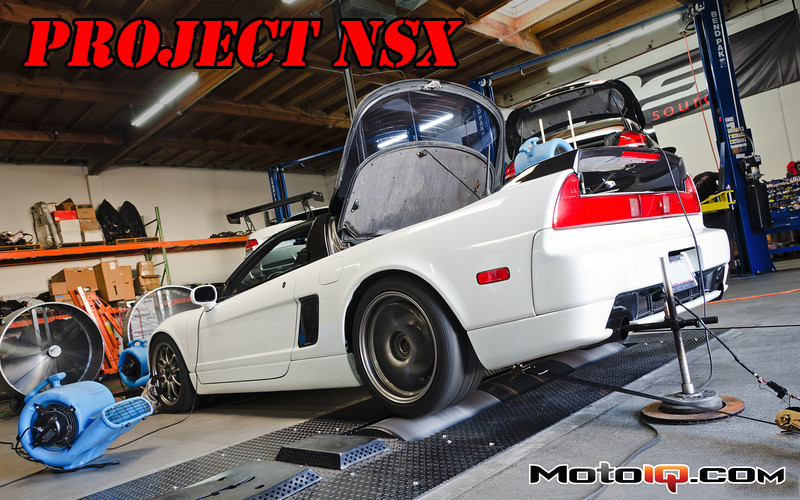A study on gutting the VVIS system of a naturally aspirated NSX was done by the iconic tuner, founder of Fastrax Turbo Technologies, and ex-head R&D manager of HKS USA, Jon Kuroyama. Jon just happens to be a fan of and previous NSX owner, as well as the tuner of the country’s (and arguably the world’s) fastest time attack car: the FX Motorsports Development FX750, which happens to be the NSX that I drove to a 1:37.520 at Buttonwillow 13CW last December (In-car Video).
Jon’s test bed was a 3.0L NA-1 NSX with NA-2 headers and an Fcon V-Pro ECU so timing and fuel mapping was locked and consistent between the runs. These modifications also explain why his power levels are much greater than stock, but are in line with what’s typical for the same modifications.

According to Jon, when the VVIS plates are gutted or removed, there is a significant loss of both power and torque over a 1,700rpm span, right where you need it for daily driving. He has found that gutting the VVIS plate resulted in a net loss of a couple horsepower across the board when compared to removing the VVIS plate altogether, which actually had a small gain of a few horsepower above 5,000rpm over the untouched and functional VVIS plate.
For most naturally aspirated applications, Jon recommends leaving the VVIS plates installed and functional, but since Project NSX is going to be turbocharged in the future, the VVIS plates would cause an air disturbance and gutting them will yield gains for us later down the road.

The C30A came with restrictive cast iron manifolds while the 3.2L C32B had much better flowing stainless steel headers. Most of the C32B’s power gain over the C30A is due to the improved headers, which have become a common swap for NA1 owners who don’t want to pay for aftermarket headers and who want to stay with OEM Honda parts. There has been a reported 15hp gain by using the NA2’s headers on C30 motors which almost completely makes up for the power differences between the two motor. Aftermarket headers typically don’t yield much more than single digit gains over the NA2 headers.







1 comment
I eliminated the VVIS plate on my NA 1 C30 and cut the splitter out of the post throttle body area. I also blended the intake runners flush to the floors aand increase vertical radii. Finally I accentuated cross flow alignment with more discrete cutting – which is due to metal thickness somewhat limited but nonetheless noticeable in appearance. Having run the car on dyno prior to this it produced RWHP just under 270 with open headers through glass dual outlet mufflers. It also made 203 RWft.#s from 5300 to 6500 rpm.
After the intake trick the car performed better with restrictor tips in the mufflers than without prior to the intake mod. The low and midrange are unaffected, but from 7000 rpm to 8000 rpm the revs come much quicker. My guess is with restrictor tips out there is likely 8 – 10 more RWHP.
The motor is now out for rebuild. I will be porting the heads mildly which means a primary focus on deep unshrouding of the valve pockets and floors with more emphasis on the exhausts. While I could add a camshaft set, there is room in the heads for 10% better flow with an average of less than .5mm metal removal and improved contour below the stem boss.
Going with a 3.2 liter overbore kit and the aforementioned mods, it is easy to imagine 300 rwhp , so that is what we are shooting for. I found the JDM short transmission gears have drastically reduced the 0 -60 time bu at least 1/2 second and put me at the torque peak a couple hundred feet before the trap in fourth gear based on the engine before teardown. I hope the next test will reveal a livelier performance.